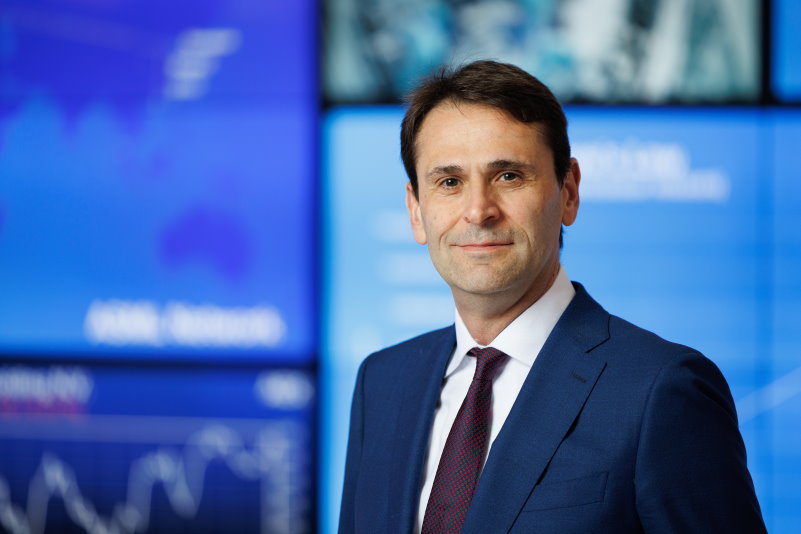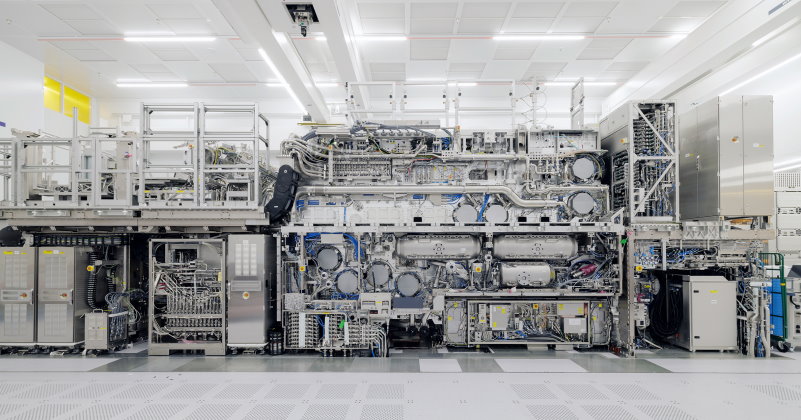
ASML still patiently waiting for the upswing
Hopeful developments at major customers haven’t yet made their way into ASML’s books. Q1 order intake at the semiconductor equipment manufacturer came in at 3.6 billion euros, miles below the previous quarter’s 9.2 billion euros. Sales were down, too, by 20 percent compared to the same period last year.
Nonetheless, the upswing has set in, CFO Roger Dassen assured in an interview published alongside the quarterly report. Pointing to rising tool utilization and normalizing inventory levels, he said that “it’s pretty clear that the industry is in its upturn.” It’s only a matter of time, then, before things start to look up. “We expect an industry recovery over the course of 2024,” added soon-to-be-CEO Christophe Fouquet, who made his debut on the earning call.

Geopolitically motivated
Three months ago, ASML designated 2024 as a “transition year” that would see little or no revenue growth for the first time in ages. But the record order intake – over twice as much as last year’s next-best quarter – prompted many industry watchers to wonder whether ASML’s management wasn’t being overly conservative.
Clearly, it wasn’t. The spike in orders originated from the memory sector, which is scrambling to supply more high-bandwidth memory (HBM) for AI chips as well as recovering from a deep downcycle. The share of memory in ASML’s order intake was well above average in Q4.
Even so, ASML felt the need to do a bit of damage control. The order intake process is known to be “quite lumpy,” Dassen said, but on average above what’s needed to realize 35 billion euros in revenue next year, the midpoint of the company’s 30-40 billion euro guidance for that year. Last year, ASML reported 27.6 billion euros in revenue, and, as mentioned, it expects to post a similar result this year.
ASML continues to prepare for a strong upswing in 2025 and beyond, which will see the cyclical upturn coincide with a high number of ‘geopolitically motivated’ fabs coming online. In the US alone, over 200 billion dollars in investments is being lined up at the leading edge.
One to two
On the technology front, ASML reported printing the first-ever 10-nanometer dense lines using the first operational high-NA EUV system in Veldhoven. “This is a huge milestone for both our customer and ASML because this single image proved that the technology we’ve been developing for many, many years is working. And you can’t imagine how welcome that milestone was by both our customer and ourselves, that’s very, very important,” said CEO Peter Wennink on the Q1 earnings call.
“Since we can soon expose wafers, what’s going to happen next is that every customer is going to come to see us here to get access to the tool we have in our lab and start to expose their own vertical so that they can decide for themselves exactly how to use the tool. And we expect that this work will lead at some point to, I would say, the next set of decisions on high-NA.”

There has been some doubt about chipmakers’ appetite for high-NA. While Intel is enthusiastically embracing the new generation of EUV tools, TSMC seemed less eager. ASML has said that the rate at which high-NA orders are coming in “matches our expectation.”
ASML expects to recognize revenue for “one to two” high-NA systems this year. Installation of the first tool has started at Intel’s facilities in Oregon and shipping of a second has started, ASML announced yesterday. The recipient wasn’t disclosed.
Advisory role
Last quarter’s results were the last with Peter Wennink in charge. Together with his friend and co-president Martin van den Brink, he’ll be stepping down at the annual general meeting of shareholders on Wednesday 24 April. Wennink will join Heineken’s supervisory board and enjoy the wine made by the chateau he co-owns. Van den Brink will stay with ASML in an advisory role and has also agreed to head up a newly established Technology Committee at ASM.





